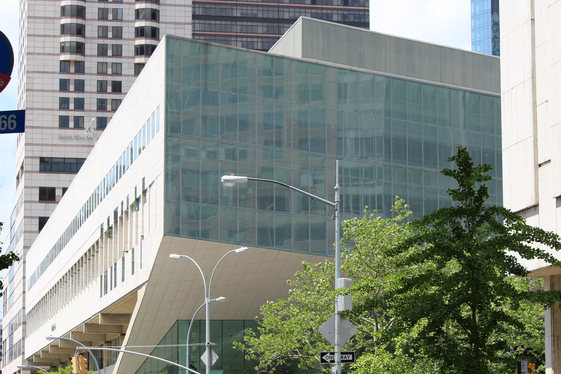|
The Juilliard School, which is housed at the Lincoln Center for the Performing Arts on New York City’s Upper East Side, is an educational institution that has helped to further the skills, talents, and careers of numerous young musicians and other performing artists from around the world for generations. Over the years, The Juilliard School has expanded its programs to include a broad array of performing arts curricula, and it now serves as Lincoln Center’s professional education division. It offers undergraduate degrees in music, drama, and dance, as well as a master’s program in music. Its current total enrollment stands at approximately 1,400 students. The following are a few interesting facts about the Juilliard School: 1. Distinguished alumniDesigned as a place to nurture extraordinary talent, The Juilliard School has produced scores of distinguished graduates who include legendary pianist Van Cliburn; cellist Yo-Yo Ma; conductor Leonard Slatkin; contemporary actors Viola Davis, Jessica Chastain, Samira Wiley, and Michael Urie; and Jon Batiste, bandleader on The Late Show with Stephen Colbert. 2. A turn-of-the-century American conservatoryThe school began as the Institute of Musical Art in 1905, when it took up residence at the corner of 12th Street and Fifth Avenue. Founder Dr. Frank Damrosch was the godson of the 19th century composer and musical prodigy Franz Liszt. Damrosch, then the head of the city’s music education program for public schools, worked with a focus on providing American music students with access to the same quality of instruction that was common in the best European conservatories. When the institute opened its doors, it did so with a student body that was five times as large as originally expected, leading to a sudden need for expanded quarters. In 1910, it relocated to a space close to Columbia University. 3. A benefactor’s legacyIn 1919, Augustus Juilliard died, leaving a will containing the largest single bequest to further music education that was unseen up until then. Juilliard, who made his fortune in the textile industry, was thus immortalized in 1924 through a new institution called The Juilliard Graduate School, funded by his bequest under the auspices of the Juilliard Foundation. Two years later, the graduate school merged with the Institute of Musical Art. The new combined school would be renamed The Juilliard School of Music in 1946. 4. Expansion beyond musicThe school, as constituted after 1926, came under the direction of a single president, John Erskine, a popular novelist and a professor at Columbia University. In 1937, Ernest Hutcheson, a widely known composer and pianist, took over as president, followed in 1945 by William Schuman, a distinguished composer. Schuman began an effort to increase the school’s reach by offering not only music courses, but a new dance division, as well. The Literature and Materials of Music program, a pioneering curriculum in the art of music theory, also became a core component of the school during his tenure.  Image courtesy Shinya Suzuki | Flickr 5. An iconic string quartetIt was also under Schuman’s direction that the school established its own in-house quartet, the Juilliard String Quartet, in 1946. The Boston Globe has called the quartet the most important ensemble of its kind ever to be founded in the United States. Today, its members not only champion and exemplify the classical tradition, but they consistently work to expand the repertoire of newer works performed. Its 2018-19 season features works that include a newly commissioned piece by renowned Estonian-American composer Lembit Beecher. Quartet members served as master instructors during their touring seasons, working with students in classes and open rehearsal formats. The group also hosts a five-day-long Juilliard String Quartet Seminar, annually in May. In 2011, the quartet received a National Academy of Recording Arts and Sciences lifetime achievement award, the first ever presented to a classical ensemble. The Juilliard School today also hosts a broad array of other performances, including those by its orchestra, wind ensemble, and members of its Marcus Institute for Vocal Arts. 6. Becoming part of Lincoln CenterIn 1968, when Peter Mennin served as Juilliard’s president, he oversaw the creation of a drama studies program headed by powerhouse actor and producer John Houseman. In that same year, under Mennin’s direction, the school rebranded itself with its current name, The Juilliard School, then relocated to its campus to Lincoln Center in 1969. During Dr. Joseph W. Polisi’s tenure as president, Juilliard added new curricula in historical performance and jazz, as well as several new drama and liberal arts tracks and community engagement programs. Damian Woetzel, a former principal dancer with the New York City Ballet, became Juilliard’s president in the summer of 2017. 7. A rich history captured on filmA documentary on the history of the school, which was produced by PBS, features the remembrances of current and former alumni and instructors. In 2018, the documentary became available for streaming online. Titled Treasures of New York: The Juilliard School, the hour-long film includes comments from world-renowned figures in the arts such as violinist Itzhak Perlman and trumpeter and music educator Wynton Marsalis. The film captures the school’s rich history of teaching, learning, and performing, from its inception to its relocation to Lincoln Center. 8. An even stronger international footprintThe Tianjin Juilliard School in China is projected to open in the fall of 2019. The school’s creators envision it as incorporating all of the elements of a true 21st century music conservatory on an international scale.
Comments are closed.
|
Photo used under Creative Commons from Marina K Caprara
 RSS Feed
RSS Feed
